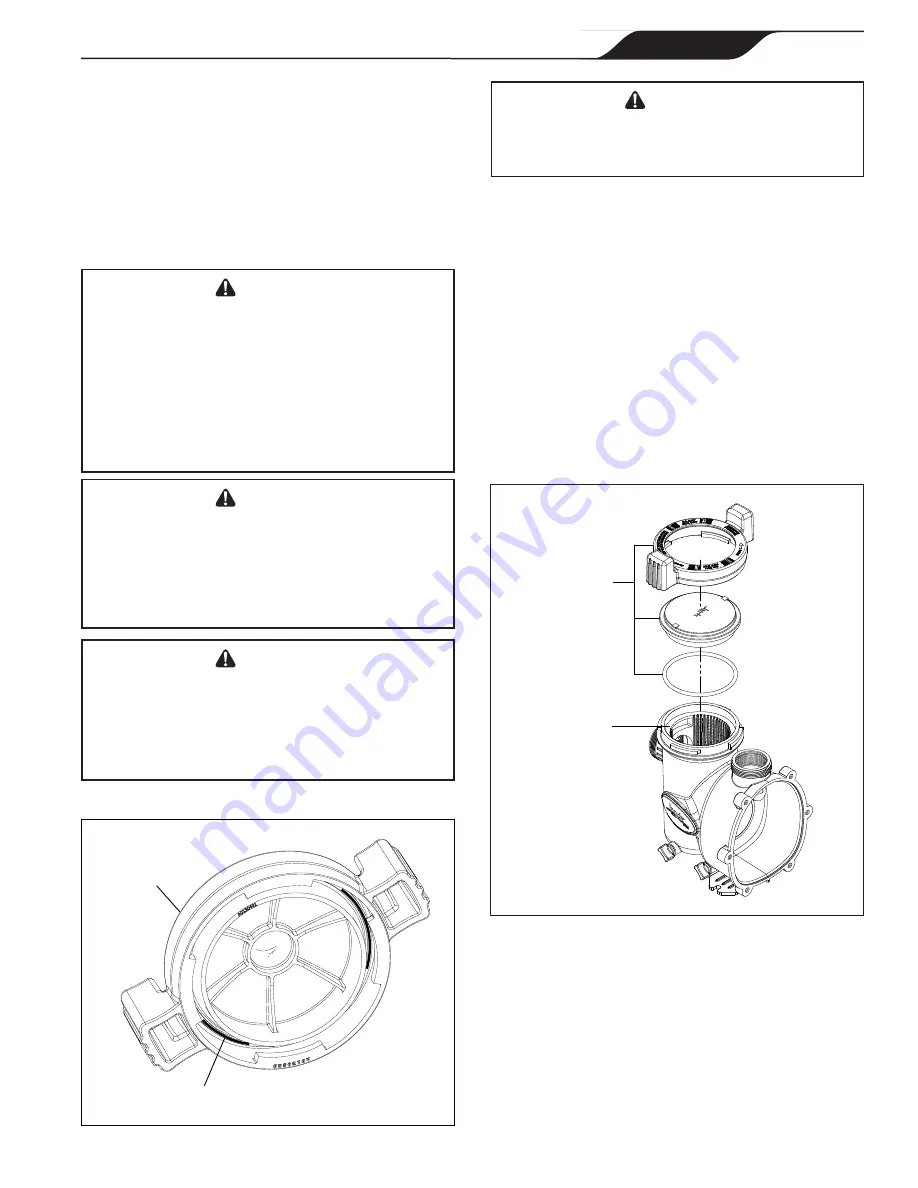
Lid with
Locking
Ring
and
Seal
Pump
Debris
Trap
Basket
(Inside
Pump)
Figure 7. Exploded View of Pump
Seal
Lid with
Locking
Ring
Figure 6. O-ring in Lid Assembly
3. Make sure all necessary isolation valves are closed
to prevent pool water from reaching the pump.
4. Following the markings on the locking ring, turn
the ring counter-clockwise until the ‘START’
markings align with the ports. See Figures 6 and 7.
5. Carefully remove the lid with locking ring.
3.5 Conduct Pressure Test
wARNING
When pressure testing a system with water, air
is often trapped in the system during the filling
process. This air will compress when the system
is pressurized. Should the system fail, this trapped
air can propel debris at a high speed and cause
injury. Every effort to remove trapped air must be
taken, including opening the bleed valve on the
filter and loosening the pump basket lid while filling
the pump.
wARNING
Trapped air in the system can cause the filter
lid to be blown off, which can result in death,
serious injury, or property damage. Be sure all
air is properly purged out of the system before
operating. DO NOT USE COMPRESSED AIR TO
PRESSURE TEST OR CHECK FOR LEAKS.
wARNING
Do not pressure test above 35 PSI. Pressure
testing must be done by a trained pool
professional. Circulation equipment that is not
tested properly might fail, which could result in
severe injury or property damage.
wARNING
When pressure testing the system with water, it is
very important to make sure that the pump basket
lid is completely secure.
1. Fill the system with water, using care to eliminate
trapped air.
2. Pressurize the system with water to no more than
35 PSI
.
3. Close the valve to trap pressurized water in the
system.
4. Observe the system for leaks and/or pressure
decay.
5. If there are lid leaks, repeat this procedure. For
technical support, call 800.822.7933.
Page 13
Jandy
®
FloPro™ Variable-Speed Pump Series VS-FHP
|
Installation and Operation Manual
ENGLISH














































